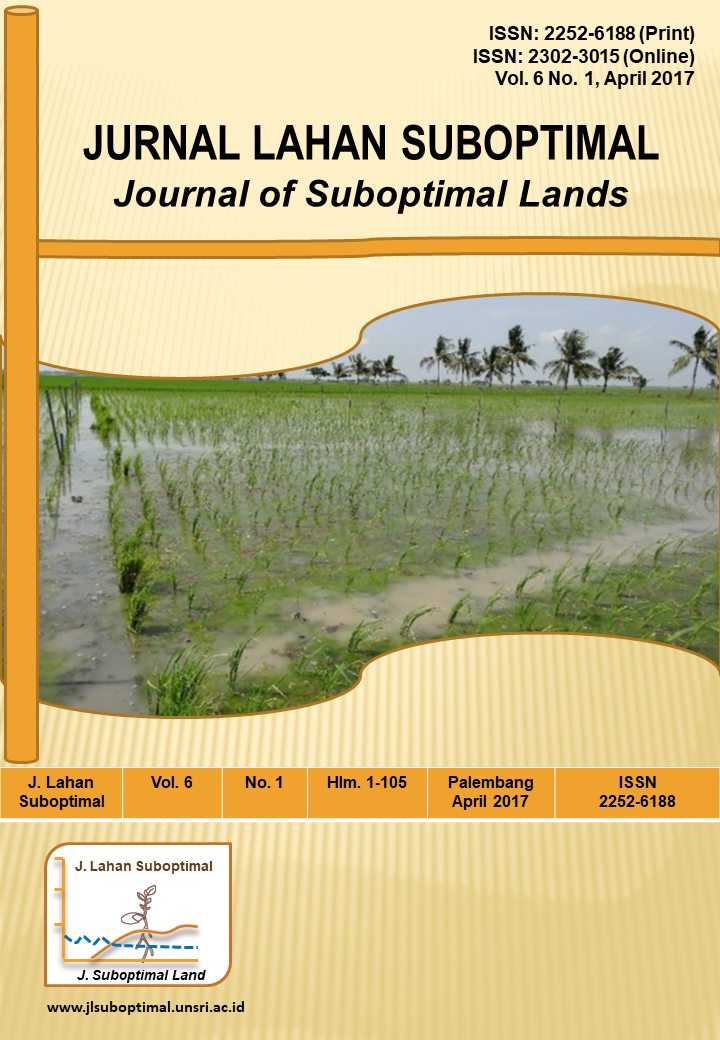Pemanfaatan Tumbuhan Liar Berbunga untuk Konservasi Musuh Alami Serangga di Ekosistem Kelapa Sawit di Lahan Sub-Optimal Sumatera Selatan
DOI:
https://doi.org/10.33230/JLSO.6.1.2017.311Keywords:
flowering plants, predator, parasioidAbstract
Prabawati et al, 2017. The Role of Wild Flowering Plants in Conserving Insect Natural Enemies in Lowland Oil-Palm Ecosystem of South Sumatera. JLSO 6(1):78-86.
Wild flowering plants can be used in increasing the potential of insect natural enemies on oil palm plantations. This paper inventoried the diversity of natural enemies that interacted with wild flowering plants in the oil palm ecosystem. Wild flowering plants are used as feed sources and living places  which provide alternate hosts for natural enemies, namely predators and parasitoids. Some families of flowering plants associated with parasitoids in oil palm ecosystem include Euphorbiaceae, Leguminosae, Fabaceae, Acanthaceae, Asteraceae, Polygonaceae, Rubiaceae, Capparidaceae, Lamiaceae, Turneraceae. Some plant species associated with predators in oil palm plantations include Antigonon leptosus, Elephantopus tomentosus, Nephrolepis biserata.
Downloads
Additional Files
Published
How to Cite
Issue
Section
License
Copyright (c) 2018 Ghani Prabawati, Siti Herlinda, Yulia Pujiastuti, Tili karenina

This work is licensed under a Creative Commons Attribution-NonCommercial-ShareAlike 4.0 International License.














